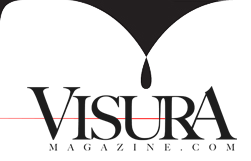Photographs: Trapped Films: Trapped / Inmate Watchers / Officer Interviews

Trapped portrays the life and conditions of the prisoners with mental illness at the Kentucky State Reformatory. My hope is that this long term and ongoing project triggers a dialogue not only about prison reform but the mental health crisis in America.
I began photographing inside the Kentucky State Reformatory prison in 2008, after reading an article in the New York Times that mentioned the growing population of mentally ill inmates. At first, I was given 10 days to photograph the story. The warden granted me three months of unrestricted access into the psychiatric unit, after I produced the first short film. It was in this unit, where I spent most of my time documenting.
Mental illness has become an increasingly important issue in the United States due to the significant growth of mentally ill patients in the prison system and the healthcare crisis in America. The continuous withdrawal of mental health funding has turned jails and prisons across the nation into the default mental health facilities. As a result, the prison system, designed for security, is now forced to address mental illness. Furthermore, mentally ill patients are now trapped inside these ill-equipped facilities with nowhere else to go to receive the necessary treatment for their condition.
The problem with the mental health system in the United States did not spring up overnight. Since the 1960s, there has been a shift from housing the mentally ill in hospitals to locking them in prison. Everyone thought that the mental health hospitals were inhumane. As a response, people with mental illnesses were released from the hospitals with the hopes that the communities would integrate them. The goal was to reduce the number of mental health patients housed in government-operated institutions and to shift the care to local communities, where programs would be created to handle their special needs. However, that did not happen and these people were left without access to treatment and adequate housing. The deinstitutionalization began the cycle of homelessness and incarceration for the mentally ill.
According to the United States Department of Justice, the number of Americans with mental illnesses incarcerated in the nation’s prisons and jails is disproportionately high. In Kentucky alone, it is estimated that 25 percent of all Kentucky prisoners are afflicted with a serious mental health problems such as schizophrenia and bipolar disorder. To alleviate the strain in the state’s prisons and jails, the Kentucky Department of Corrections decided to concentrate its efforts in one location. In 1998, it created the Correctional Psychiatric Treatment Unit at the Kentucky State Reformatory. What began as a 13-bed unit has grown into a 150-bed treatment unit for the state’s most severely mentally ill inmates. While this is progress for the department of corrections, their priority is security. As a result, they acknowledge that they are not able to meet the needs of this new and growing population.
I witnessed a reality most people do not even know exists in America.
Our prison system needs reform. That being said, it took me only a couple of days—behind the walls of the prison hearing the cries of the mentally ill prisoners—to realize the complexity of this issue. It has become increasingly hard for people with mental illness to get consistent treatment in the community. Many of them find refuge and treatment for the first time in the prison system, one that is an inadequate facility for this population.
During the three months, I left the prison everyday feeling the same way the warden and the doctors do. On one hand, I wanted to help these men, but I felt helpless. Most days I spent listening to their stories and songs, and learning about their demons in their minds. Some days, I was frightened by their violence and others I left the prison heartbroken. I had to remind myself that many of these men had done heinous things. There were also days when I was reminded that some of these men have faded into a correctional or prison system without hope of ever being released.
When I started the project, I had no idea the impact it was going to have on my life. Whenever you witness something like this, something that people in the community rarely see or talk about, the experience impacts your view of the world. And this project did just that for me. Most people that are considered a nuisance in our society have nowhere to go and no one really to take care of them. Through this project, I have seen how medicine can help and hurt, and how isolation in prison is not the answer for most people with mental illness. I am now a huge supporter of funding for mental health centers and mental health funding in our communities. This is a viable way to keep people with mental illness from cycling in and out of the prison system, which is ultimately more expensive for our society.
I witnessed these men cry. I saw them hit themselves so hard in the head that they bled. I watched as they threw their feces at the officers with anger and desperation. I witnessed a reality most people do not even know exists in America. These men are outcasts of society and their voices are rarely heard.
This is their story.
www.jennackerman.com





